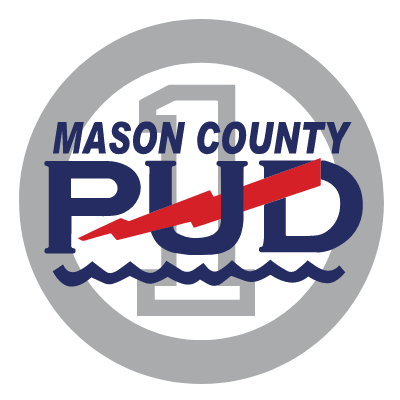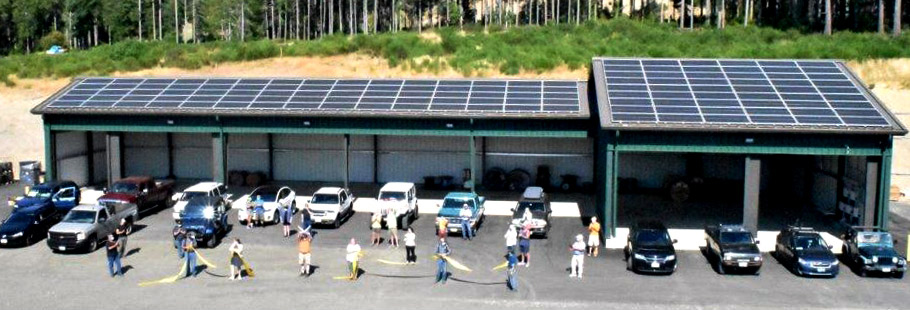Mason County PUD No. 1 unveiled their second community solar project at a drive-in ribbon cutting on Tuesday, July 28th at the PUD’s new warehouse in Potlatch. After construction delays and rescheduling due to the pandemic, persistence paid off as over two dozen customers, community members, and employees came together under proper safety guidelines to celebrate the new solar array. “It was difficult trying to navigate around the Safe Start guidelines to hold a ribbon cutting event where our customers felt safe to participate,” stated Julie Gray, project manager for the PUD’s solar program. “After almost cancelling again, we floated the idea of having a drive-in style ribbon cutting where people could come to the campus to see their solar project from their vehicles. I was surprised at how many of them immediately replied that they loved the idea, so we made it happen.”
The Community Solar II project was developed by customer request. “Washington state PUDs are longstanding leaders in clean energy, with many of us having fuel mixes that are already 95-98% carbon free. Despite the reduction in state incentives for community and rooftop solar, we are still getting a strong interest from our customer base for solar and other renewable energy projects, which motivates us to make these opportunities available for our ratepayers,” said PUD 1 general manager Kristin Masteller. In addition to the two community solar projects, and three privately-owned hydroelectric projects on the PUD 1 system, the District also has invested in electric vehicle charging at the PUD and has partnered with local businesses and the Skokomish Tribe to expand it through the PUD’s service area.
 Solar panels are predicted to produce energy for approximately 20 years. The PUD estimates that with the state incentive that runs through 2028, and the anticipated output from the array, customers who purchased units of the project, at $100 per unit, should see a return on their investment in 15-18 years. “While our first solar project did have a much higher incentive payment, it also produced enough energy to pay for itself in four years, where we were initially estimating 7-10 years,” stated Gray. “It’s possible that this project could exceed our generation estimates too and shorten that payback time. From then on, it’s income earned through energy credits on customers’ bills for the rest of the life of the project.”
Solar panels are predicted to produce energy for approximately 20 years. The PUD estimates that with the state incentive that runs through 2028, and the anticipated output from the array, customers who purchased units of the project, at $100 per unit, should see a return on their investment in 15-18 years. “While our first solar project did have a much higher incentive payment, it also produced enough energy to pay for itself in four years, where we were initially estimating 7-10 years,” stated Gray. “It’s possible that this project could exceed our generation estimates too and shorten that payback time. From then on, it’s income earned through energy credits on customers’ bills for the rest of the life of the project.”
At over 50 kilowatts, this project is more than twice the size of the PUD’s first solar project in 2016.In addition to the 965 units purchased by 41 customers, 500 units were paid for with a $50,000 grant from Bonneville Environmental Foundation to fund a low-income program. “BEF has been an amazing renewable energy partner for the PUD. This is the second project we’ve worked on with them and we have another in the pipeline later this year,” said Masteller. “Their grant enabled us to enroll 10 low income households in the program and those customers will receive the solar benefits until 2024, when we will draw 10 new participants. Over the life of the system, we should see up to 50 low-income households go through this program over the next 20 years. It’s an innovative way to ensure people at all income levels can take part in clean energy projects.”
Gray reported that between its start in May through June 30th, the array had already produced 14,193 kilowatt hours. Participants should receive their first incentive payment in coming weeks. The generation for both projects can be tracked online at solar.mason-pud1.org.

